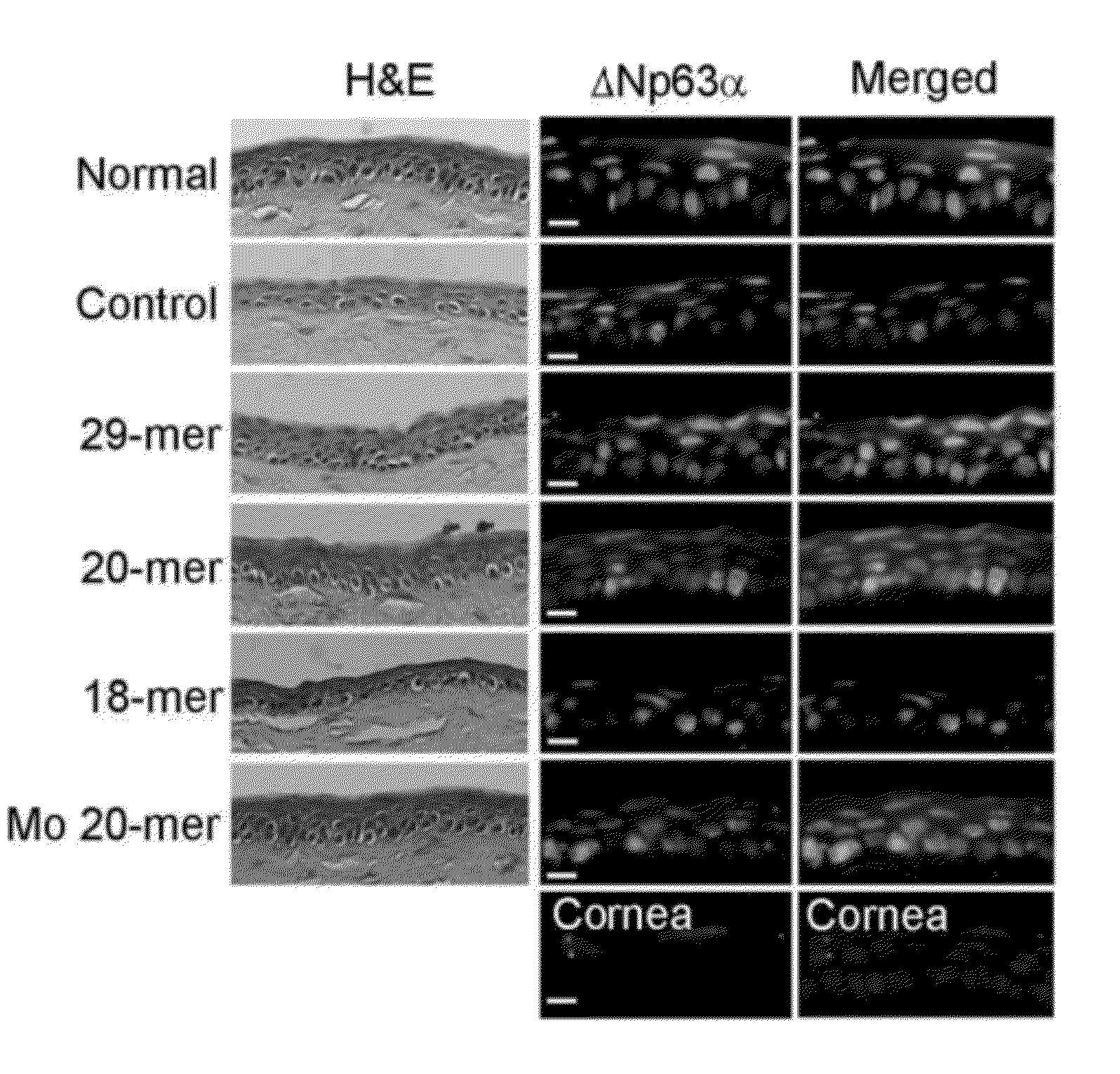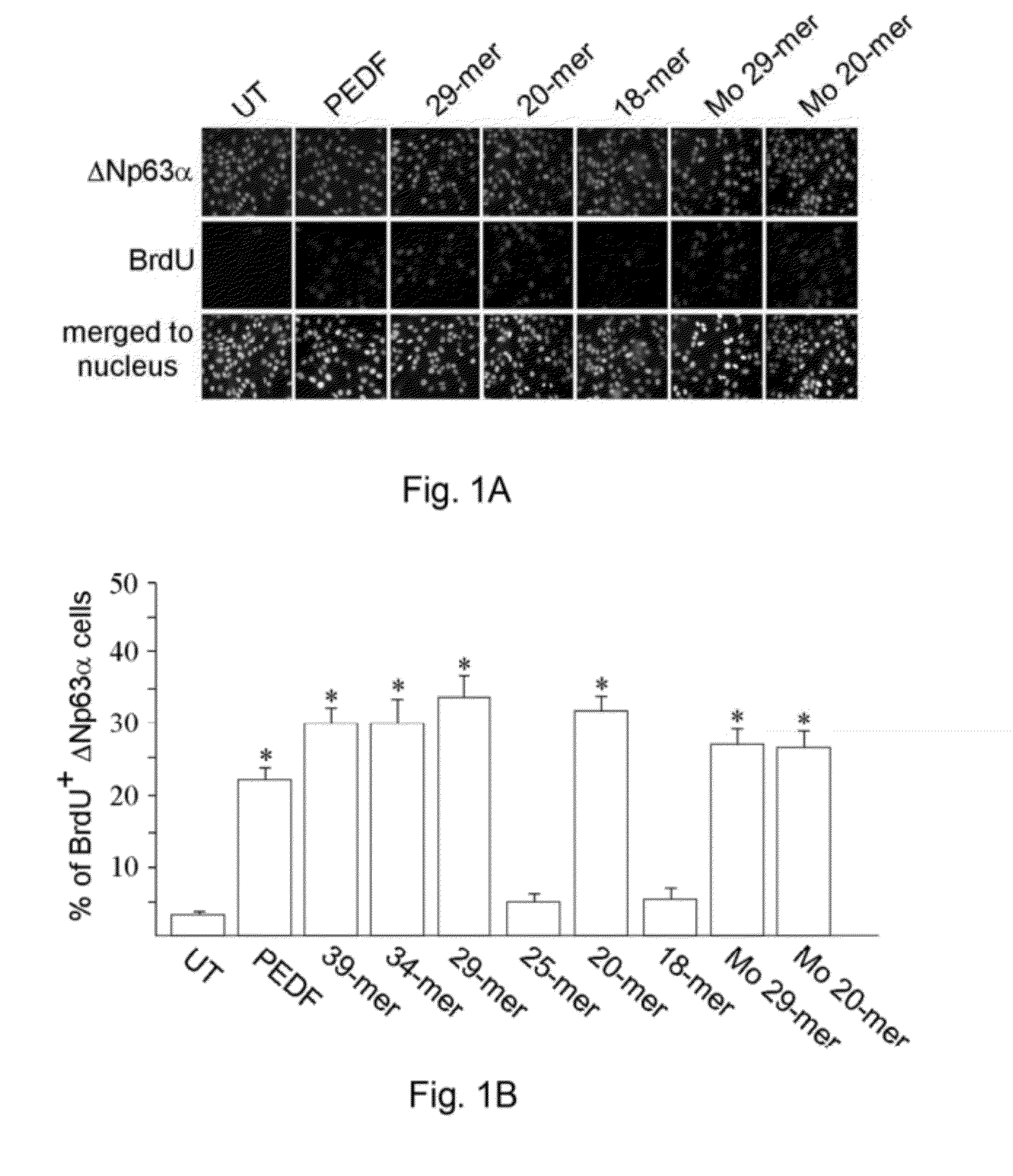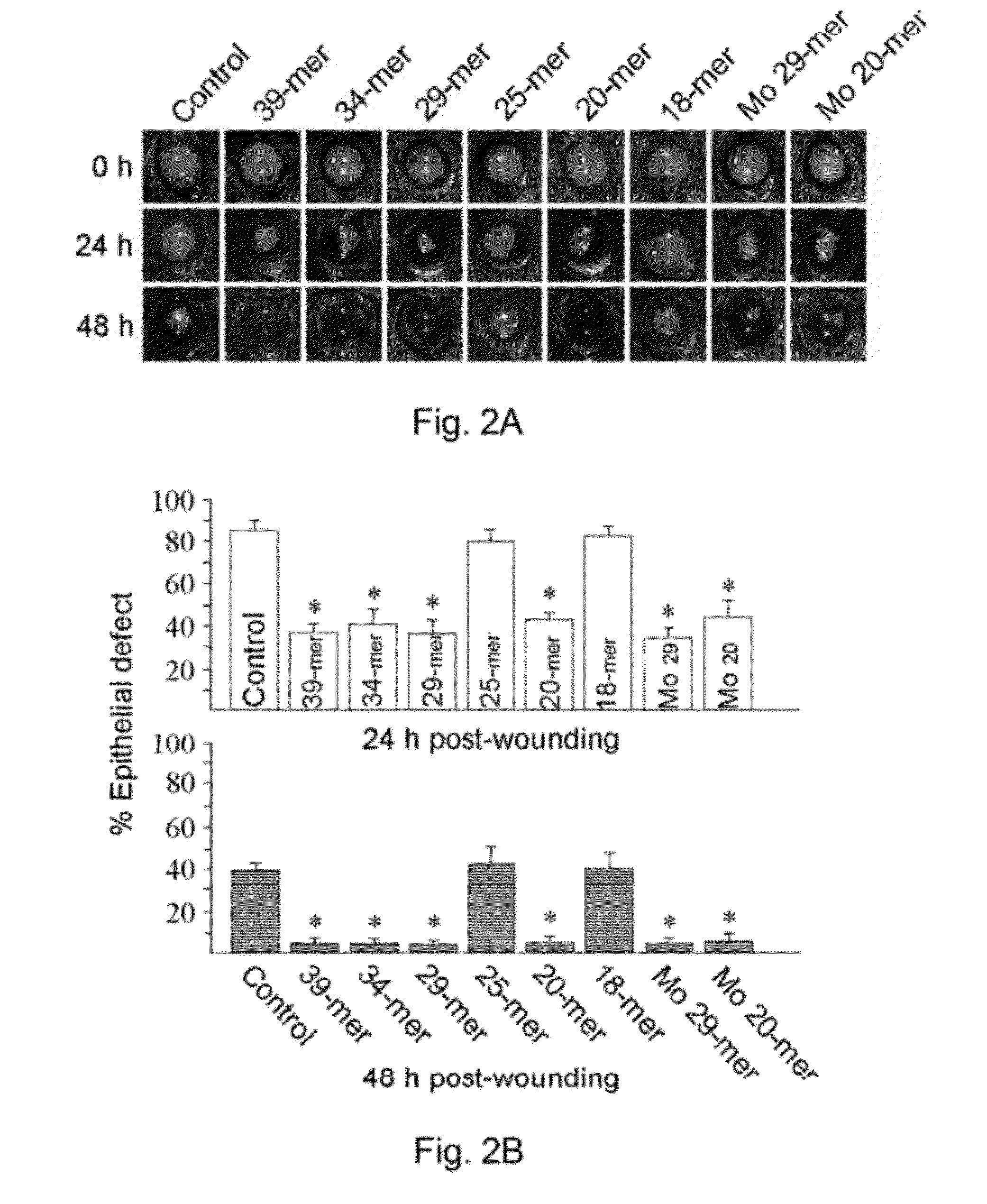Use of pedf-derived polypeptides for promoting stem cells proliferation and wound healing
a technology of stem cell proliferation and polypeptides, applied in the field of stem cell proliferation, can solve the problems of loss of proliferation capacity, failure of limbal transplantation, vision loss,
- Summary
- Abstract
- Description
- Claims
- Application Information
AI Technical Summary
Benefits of technology
Problems solved by technology
Method used
Image
Examples
example i
PEDF-Derived Short Synthetic Peptides Promote In Vitro LSC Proliferation
[0106]To identify the functional domain responsible for activating LSC proliferation, surface probability and hydrophilicity of the PEDF protein (123 amino acids from positions 78-200 of the 418 amino acids of human PEDF; GenBank number U29953) were analyzed and the amino acid sequence from positions 83-121 (referred as 39-mer) was identified to be the most variable region. A serial of short peptides respectively cover amino acid sequence from residues 83-121 of PEDF, and variants thereof were synthesized and then used to investigate their respective efficacy on proliferating LSCs in culture.
[0107]To determine the effects of PEDF-derived short peptides may have on the self-renewal of LSCs, LSC proliferation was examined by BrdU pulse-labeling (2 hours; red color) and LSC phenotype was revealed by immunostaining ΔNp63α (green color).
[0108]As demonstrated in FIG. 1A, proliferation of LSCs cultivated in medium cont...
example ii
PEDF-derived Short Synthetic Peptides Promote In Vivo Corneal Wound-Healing
[0110]To investigate the effect of PEDF-derived short peptides on corneal wound healing in mice, corneal wound was created by a circular punch (2 mm diameter), then control eye-ointment or eye-ointment containing the short synthetic PEDF peptide(s) of this invention was applied to the wounded eye, and wound healing was subsequently evaluated by fluorescein staining. No significant differences in the size of the initial abrasion were noted between synthetic PEDF peptide-treated and control mice. After 48 hours, complete corneal re-epithelialization was found in mice treated with either 39-mer, 34-mer, 29-mer, 20-mer, Mo 29-mer, or Mo 20-mer, whereas control group mice and mice treated with 25-mer or 18-mer exhibited incompletely healed wounds (FIG. 2A). 39-mer, 34-mer, 29-mer, 20-mer, Mo 29-mer, or Mo 20-mer treatment resulted in significantly smaller epithelial defect than that of the control mice at 24 hours...
example iii
PEDF-derived Short Synthetic Peptides Promotes In Vivo LSC Proliferation After Corneal Wounded
[0111]To investigate whether the LSC proliferation during corneal wound healing could be accelerated by the synthetic peptide of this invention, mice were intraperitoneally received BrdU and euthanized at 24 hours after corneal wounding. ΔNp63α (green) and BrdU (red) double-immunostaining of ocular sections revealed that the levels of BrdU- and ΔNp63α-positive cells in the limbus of 29-mer and 20-mer treated eyes were elevated, as compared with that of the control eyes (FIGS. 3A and 3B; 43.2±4.6% and 42.4±4.3% versus 15.0±7.6%); whereas the level of LSC proliferation in 18-mer treated eyes was similar to that of the control animals.
[0112]On day 5 post-wounding, HE stain and ΔNp63α (green) immunostaining of ocular sections revealed that the thickness of the limbus of 29-mer, 20-mer and Mo 20-mer-treated eyes returned to full-thickness of stratified layers, as compared with that of the normal...
PUM
| Property | Measurement | Unit |
|---|---|---|
| Fraction | aaaaa | aaaaa |
| Fraction | aaaaa | aaaaa |
| Molar density | aaaaa | aaaaa |
Abstract
Description
Claims
Application Information
 Login to View More
Login to View More - R&D
- Intellectual Property
- Life Sciences
- Materials
- Tech Scout
- Unparalleled Data Quality
- Higher Quality Content
- 60% Fewer Hallucinations
Browse by: Latest US Patents, China's latest patents, Technical Efficacy Thesaurus, Application Domain, Technology Topic, Popular Technical Reports.
© 2025 PatSnap. All rights reserved.Legal|Privacy policy|Modern Slavery Act Transparency Statement|Sitemap|About US| Contact US: help@patsnap.com



